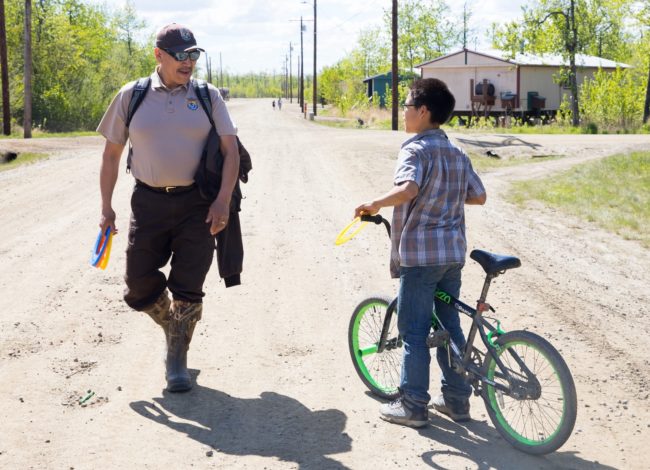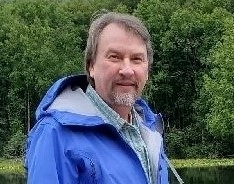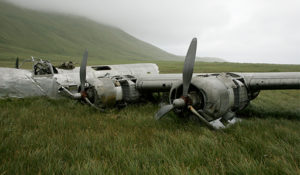This meeting’s presentation was recorded: watch below.
This recording does not include Jacqueline Cleveland’s video (not yet released).
Christopher Tulik of the Yukon Delta National Wildlife Refuge and Jacqueline Cleveland of the Togiak National Wildlife Refuge, both Yupik, will present on their work as Refuge Information Technicians (RITs). Christopher’s intimate knowledge of the Yupiaq language and culture, the local area and the people make him a valuable liaison between the Refuge and those who live in the communities on and around the Yukon Delta Refuge. He travels by boat, snowmachine and plane to make personal visits to dozens of small subsistence communities. During the visits, he informs residents about Refuge-related conservation work, hunting and fishing opportunities, and other topics that are important to subsistence harvest. He also hears their concerns and local knowledge of fish and wildlife matters and ensures this is communicated to Refuge staff back at refuge headquarters. Jacki is new to her role as an RIT for Togiak National Wildlife Refuge. She will share with us the essence of subsistence life in her village of Quinhagak through her outstanding photography and videography.
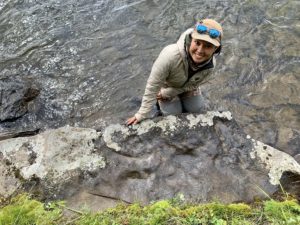
Jacqueline with sauropod dinosaur tracks on the Togiak Refuge.
Christopher Tulik was born in Bethel and raised in Nightmute, a small village on Nelson Island along the western Bering Sea coast of the refuge. Growing up in a traditional subsistence lifestyle has given Christopher an understanding of the importance of fish and wildlife to the culture of local Alaska Native people. Christopher has said he became interested in working with wildlife when he was very young and became aware of the fish and wildlife all around him that sustained his family in all seasons. He learned respect for nature from watching his father and older brothers returning from the hunt and how the catch had been properly handled.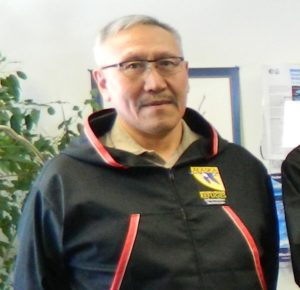 Christopher Tulik
Christopher Tulik
He was one of the youngest Refuge Information Technicians (RITs) hired when the program began in 1984. After a break, he returned to serve as an RIT in 2014 to assist the Refuge with outreach, education and tribal consultation. Christopher Tulik recently accepted a position as the Lead Refuge Information Technician (RIT) for the Yukon Delta National Wildlife Refuge. In this position Chris will supervise up to five permanent RITs. You can read more about Chris’s life and work here.
Nalikutaar (in Yup’ik) or Jacqueline Cleveland was raised in Quinhagak, Alaska where she currently lives with her fiancé, Franko and dog, Pumba. Jacki received her Bachelor of Art’s degree from Montana State University in Media and Theatre Arts and Native American Studies. She is a subsistence hunter, fisher and gatherer, a freelance photographer/videographer, and recently accepted the job of Refuge Information Technician for the Togiak National Wildlife Refuge.
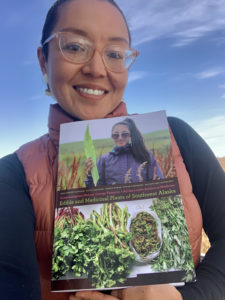 Jacqueline Cleveland with the book that features her photographs.
Jacqueline Cleveland with the book that features her photographs.
Jacki has had her photographs published in numerous publications most notably in the 2020 book from the University of Alaska Fairbanks press, Yungcautnguuq Nunam Qainga Tamarmi/All the Land’s Surface is Medicine: Edible and Medicinal Plants of Southwest Alaska, for which she did most of the photography. Jacki recently completed a film project with BBC on Nelson Island in which she served as location manager. The segment on muskox in rut filmed on the island will be part of the Earth’s Great Rivers II to be out this spring on BBC. Jackie is currently finishing up work on a film about climate change that she co-directed, served as cultural advisor for, as well as did some of the filming. Ellavut Cimirtuq/Our World is Changing will also be out this spring.
